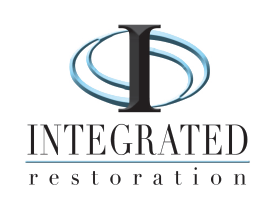How to Spot Roof & Siding Damage Before It’s Too Late
Your roof and siding are your property’s first line of defense against the elements. Over time, storm damage, moisture, and wear and tear can cause issues that, if left untreated, can lead to expensive repairs or even structural damage. Knowing how to identify early warning signs can help you take action before it’s too late.
Early Signs of Roof Damage
1. Missing or Damaged Shingles
Strong winds, hail, and heavy rain can crack, curl, or blow away shingles, exposing your roof to potential leaks. If left unaddressed, missing shingles can allow water to seep into the underlayment and decking, leading to rot and interior water damage.
2. Water Stains on Ceilings or Walls
If you notice yellow or brown water stains, it could indicate a roof leak. Even a small leak can lead to mold growth, compromised insulation, and interior damage over time. Leaks often originate from damaged flashing, cracked seals, or improperly installed shingles.
3. Granules in the Gutters
Asphalt shingles shed granules as they age. If you notice an excessive amount in your gutters, it could mean your roof is deteriorating. This loss of protective granules makes shingles more vulnerable to UV exposure and weather damage, accelerating their breakdown.
4. Sagging Roofline
A sagging or uneven roofline may be a sign of structural issues or trapped moisture, which can weaken the integrity of your home or building. If you spot a sagging section, it’s crucial to schedule an inspection to prevent possible collapse.
Concerned about your roof? Learn more about our roofing services.
Early Signs of Siding Damage
1. Cracks, Warping, or Loose Panels
Visible cracks, gaps, or warping can expose your home to water intrusion and pest infestations. Warped siding can also indicate trapped moisture beneath the surface, leading to mold and structural decay.
2. Peeling Paint or Bubbling Under the Surface
These are signs of moisture trapped beneath your siding, which can lead to rot and mold growth. Water infiltration can spread quickly, compromising the integrity of your exterior walls.
3. Fading or Discoloration
Sun exposure can cause siding to fade over time, but if you notice sudden discoloration, it could be a sign of UV damage or underlying moisture issues. Siding that deteriorates prematurely may need replacement to restore protection.
4. Increased Energy Bills
If your heating or cooling costs are rising, damaged siding may be allowing air leaks, making your home or business less energy efficient. Poor insulation and air infiltration can lead to uneven indoor temperatures and costly utility bills.
Need new siding? Explore our siding repair and replacement services.
Seasonal Roofing & Siding Risks
Each season presents unique challenges for your roof and siding:
Winter: Ice dams, heavy snow, and freezing temperatures can cause roof leaks and siding cracks. Learn how to prevent winter roof damage.
Spring: Severe storms bring high winds and hail, which can dent siding, rip off shingles, and create water infiltration points.
Summer: Intense heat can cause materials to expand and contract, leading to cracks, warping, and increased wear on siding and roofing materials.
Fall: Leaves and debris can clog gutters, leading to moisture buildup and rot. Blocked gutters can also contribute to ice dam formation in winter.
Preventative Maintenance for Roofs & Siding
Being proactive can help prevent costly damage. Here are essential maintenance steps:
Regular Inspections: Schedule seasonal inspections to catch small issues before they become major problems.
Gutter Maintenance: Keep gutters and downspouts clean to ensure proper water drainage and prevent roof and siding damage.
Seal Gaps and Cracks: Regularly check and seal any openings in your siding, roofing, and flashing to prevent water penetration.
Trim Overhanging Branches: Tree limbs can cause impact damage and increase the risk of moisture buildup on the roof and siding.
Should You Repair or Replace?
If the damage is minor and localized, a simple repair may be enough. However, widespread or recurring issues often signal the need for a full replacement.
Roofing: If your roof is over 20 years old, replacing it may be more cost-effective in the long run.
Siding: If more than 25% of your siding is damaged, a full replacement is often the best solution to prevent further deterioration.
Insurance Coverage for Roof & Siding Damage
Many homeowners and business owners wonder whether insurance covers roof or siding repairs. Here’s what you should know:
Covered by insurance: Damage from storms, hail, or fallen trees.
Not covered: General wear and tear, neglect, or improper maintenance.
If your roof or siding damage is due to a covered event, document the damage with photos and contact your insurance provider promptly.
If you need assistance with the claims process, our team can help ensure you receive fair compensation for repairs.
Get Professional Help Before It’s Too Late
Your roof and siding are critical in protecting your home or business. Ignoring early signs of damage can lead to costly repairs, interior damage, and even structural issues.

